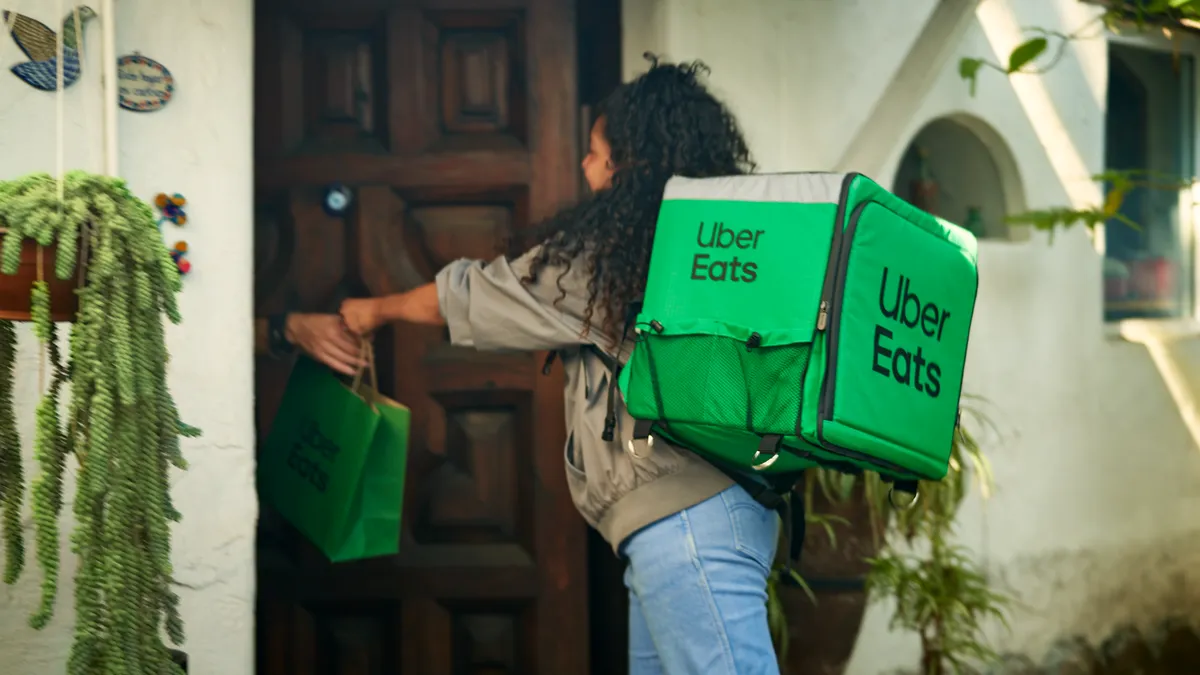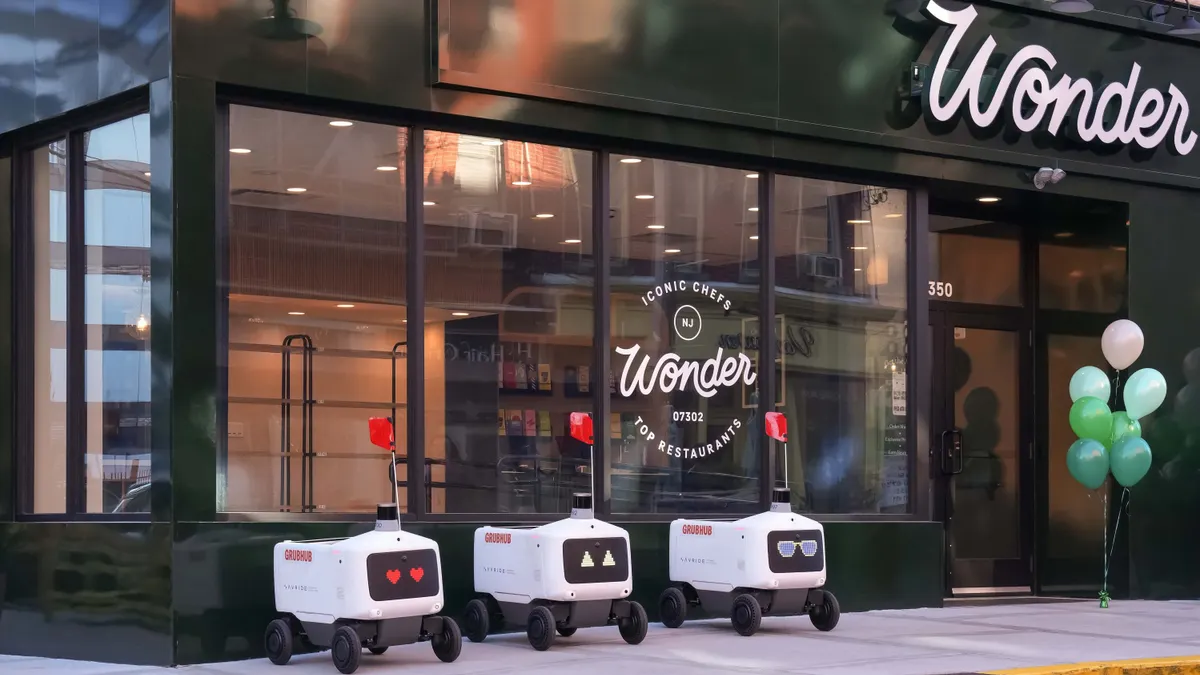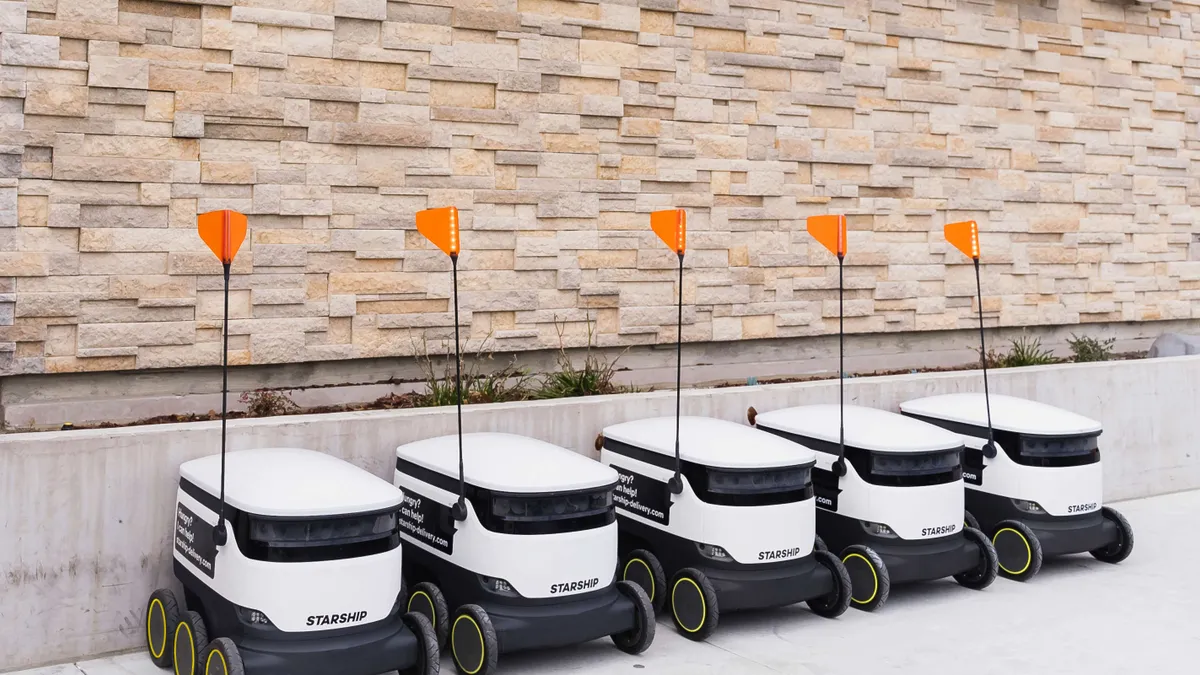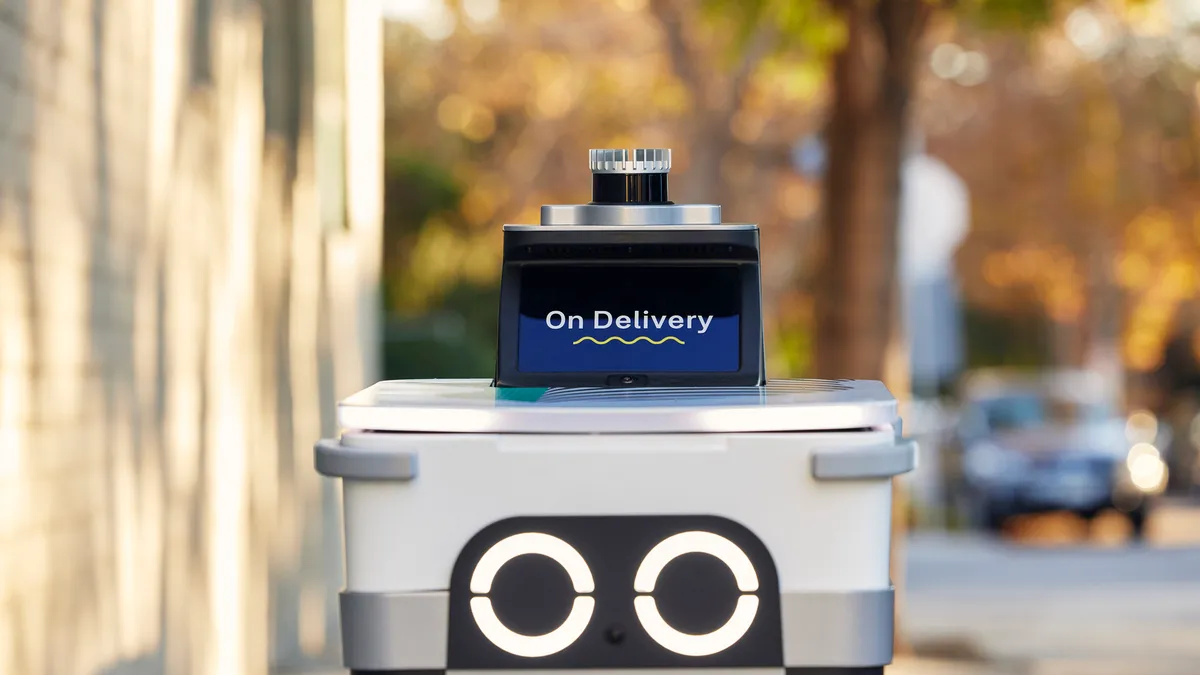Uber Eats is refining the collection of virtual restaurants offered on its platform to improve quality and variety. The delivery aggregator rolled out an initiative called the Certified Virtual Restaurant Program Tuesday, which will connect small and medium restaurant partners to virtual kitchen companies Nextbite, Acelerate and Virtual Dining Concepts to create more effective brands, the company wrote in an email. Concurrently, Uber Eats updated its virtual restaurant policies to cut down on duplicate menus that have flooded the platform.
The new initiatives follow tremendous virtual restaurant growth on Uber Eats. In 2021, the delivery aggregator hosted 10,000 virtual brands, but that number rose to 40,000 last year, said John Mullenholz, Uber’s head of virtual Restaurants and Dark Kitchens for the U.S. & Canada.
The certified virtual restaurant program was inspired by restaurant partner feedback. SMBs have been asking daily about launching virtual restaurants with Uber Eats, Mullenholz said. Interested restaurants range from experienced digital operators to those that don’t have a lot of experience and want more turnkey solutions.
If an Uber Eats partner indicates interest in launching a virtual brand, the delivery platform will loop in a virtual brand partner to develop the concept, Mullenholz said. Uber Eats trained its sales and account management teams, and gave them sales materials and talking points, to help educate SMBs about this opportunity.
“We’re matchmakers in this situation, just trying to connect folks who want to grow their business with a virtual restaurant with some really experienced, high-quality brand builders and content creators,” Mullenholz said.
Uber Eats’ consumer value proposition benefits from the virtual brand program, as well. This new system will bring higher-quality virtual restaurants on its platform, which will yield more accurate orders and better food quality, he said.
“For all parties, this program adds a layer of verification and transparency for customers, certifying that their food is coming from high-quality kitchen operators, giving the customer an added level of comfort when ordering from Uber Eats,” Stephanie Sollers, CEO of Virtual Dining Concepts, said in a statement.
Uber Eats curated a selection of virtual brands that would appeal to SMBs that have commonly used kitchen equipment, such as fryers, flat-top stoves and ovens. Brands available include Nextbite’s Huevorito, Virtual Dining Concept’s MrBeast Burger and Acelerate’s Scratch Kitchen.
“We've brought in some of the best virtual brands and virtual concepts in the industry to try to create a menu of virtual concepts for SMBs, to pick from different dayparts, different cuisine types, so that they can enjoy a lot of success when they launch a virtual restaurant,” Mullenholz said.
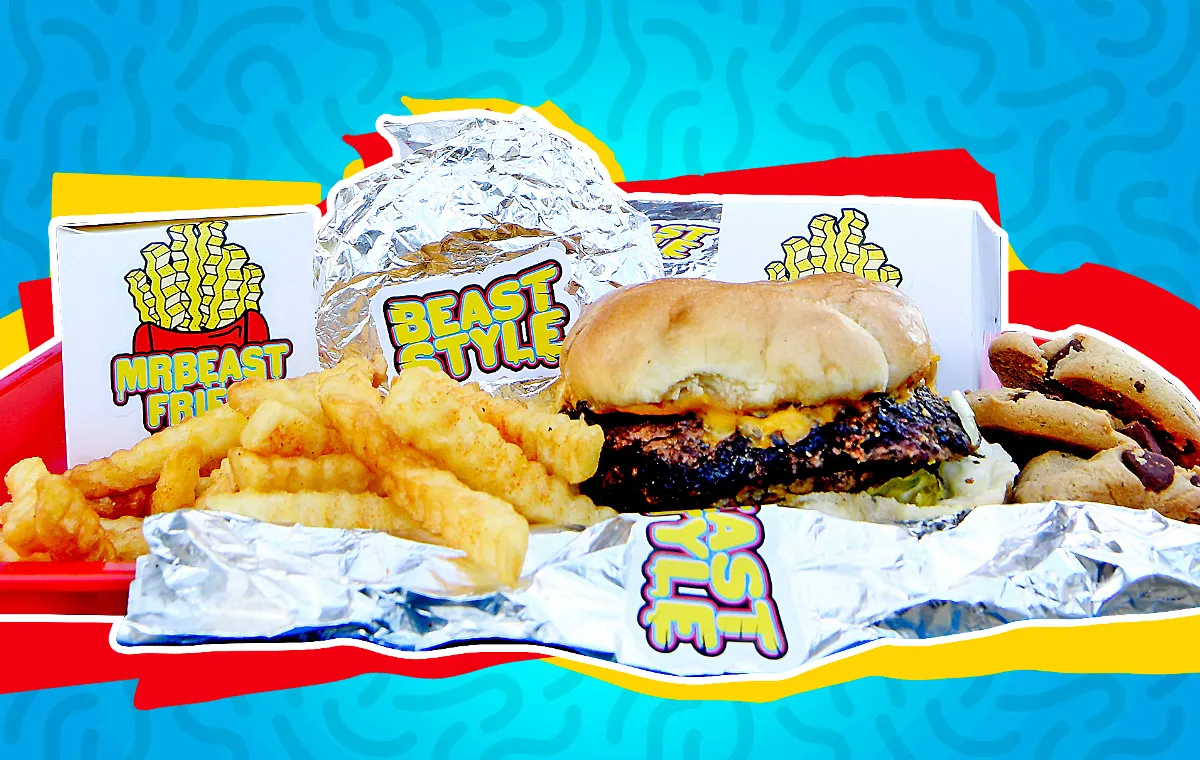
Removing duplicate menus, boosting quality selections
Going forward, virtual restaurants on Uber Eats must consistently have at least a 4.3-star rating, at least 10 orders rated by customers, 5% or fewer orders canceled by the merchant and 5% or lower inaccurate order rates, along with other requirements. Virtual restaurants must also include a hero image in their Uber Eats profiles, along with images of at least five different menu items that are unique to their menus, which must be at least 60% different from the menu of their brick-and-mortar or delivery-only hosts. Uber didn’t share when, or how often, these metrics would be reviewed.
Uber Eats expects about 5,000 storefronts to be impacted by the new policies, which are designed to weed out duplicate menus among existing virtual brand concepts. The aggregator knew it needed to develop restrictions around such offerings when it noticed an influx of virtual brands were being launched from the same address, Mullenholz said.
“If one single operator has 10 different burger concepts that are all the same exact menu, that’s not representative of the true variety of burger options in the area,” Mullenholz said. “That’s part of what we’re guarding against.”
Uber Eats will use technology to check operational metrics around virtual restaurants, including identifying menus that are identical or nearly identical to a restaurant with the same address. Partner restaurants will only be allowed to launch new virtual brands, either independently or with Uber Eats’ account team, once every four weeks, unless given written approval. Once new virtual restaurants are launched, those brands must maintain the same quality ratings as the operator’s original brick-and-mortar location.
“We wanted to try to balance the ability of restaurant operators to be creative and launch interesting new concepts, while at the same time guarding against that duplicative menu launched out of one single brick-and-mortar location,” Mullenholz said. “We wanted to be really, really thoughtful about it, because we do see the virtual restaurant space as a highly innovative space where we're going to see a lot of growth over the coming years, if not decades.”


